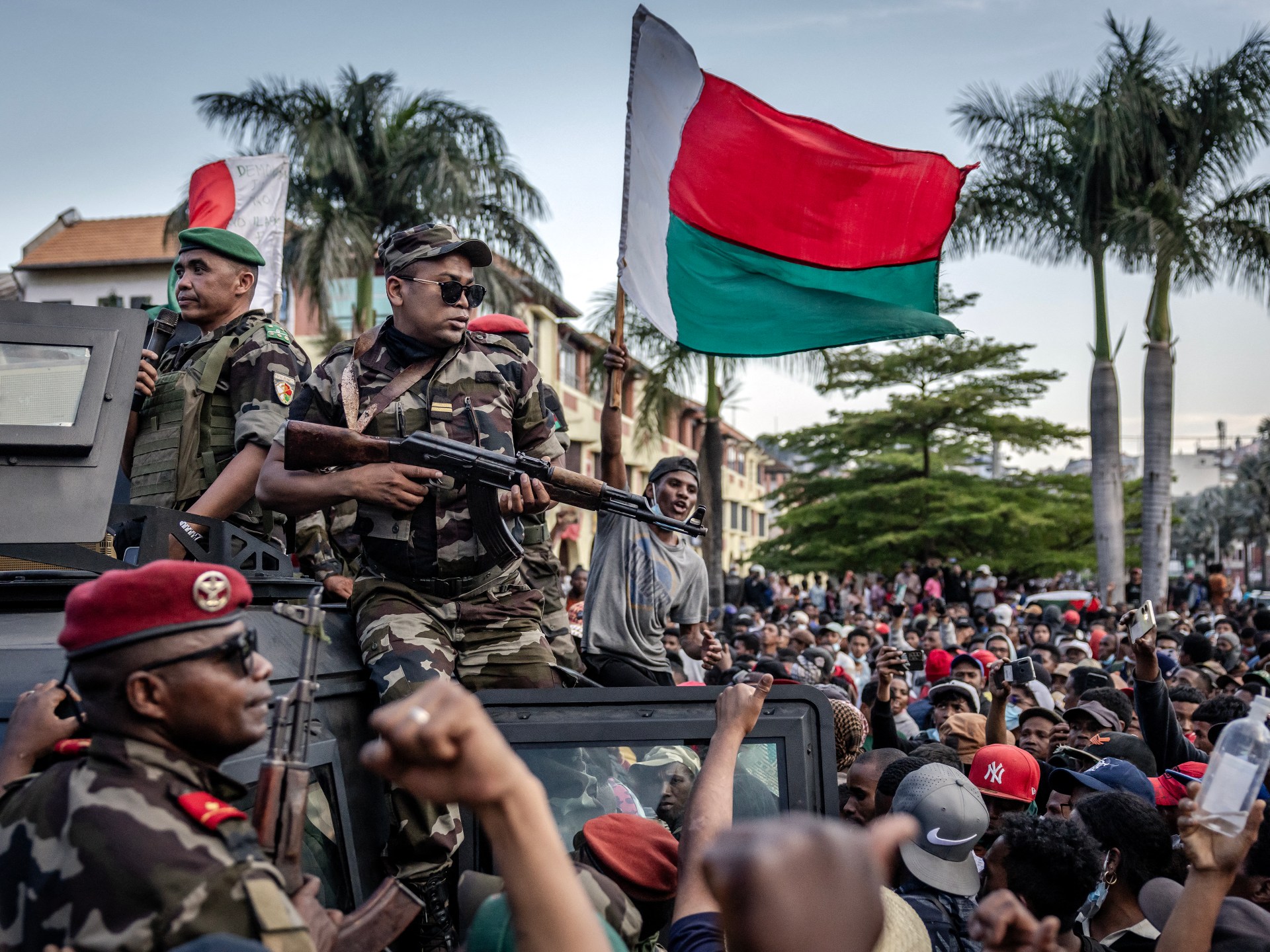Some groups of Madagascan soldiers have defied orders and joined thousands of antigovernment protesters assembled in the capital, Antananarivo, as demonstrations against President Andry Rajoelina’s rule gain momentum.
The youth-led protesters entered the capital’s May 13 Square on Saturday for the first time in one of the biggest gatherings since a protest movement inspired by what has become known as the Gen Z protests in Kenya and Nepal erupted on the Indian Ocean island on September 25.
Recommended Stories
list of 3 itemsend of list
After police used stun grenades and tear gas to try to disperse the demonstrators, soldiers arrived at the scene, where they were welcomed with cheers.
At a meeting at an army barracks on the outskirts of the city earlier, soldiers in the elite CAPSAT unit, which played a pivotal role in Rajoelina’s rise in 2009, issued a rare public call for solidarity as demonstrators demanded the president’s resignation.
“Let us join forces, military, gendarmes and police, and refuse to be paid to shoot our friends, our brothers and our sisters,” the soldiers at the base in the Soanierana district said in a video posted on social media.
They called on soldiers at the airport to “prevent all aircraft from taking off” and those in other camps to “refuse orders to shoot your friends”.
“Close the gates, and await our instructions,” they said. “Do not obey orders from your superiors. Point your weapons at those who order you to fire on your comrades in arms because they will not take care of our families if we die.”
A video broadcast by local media showed some soldiers leaving the barracks to escort protesters into May 13 Square, the scene of many political uprisings, which had been heavily guarded and off-limits during the unrest.
Saturday’s demonstrations were the largest in several days in the youth-led movement, which was sparked by anger over power and water shortages and evolved into a broader antigovernment campaign.
It was unclear how many soldiers had joined the call on Saturday.
The newly appointed minister of the armed forces called on soldiers to “remain calm”.
“We call on our brothers who disagree with us to prioritise dialogue,” Minister General Deramasinjaka Manantsoa Rakotoarivelo said at a news conference.
“The Malagasy army remains a mediator and constitutes the nation’s last line of defence.”
Several people were injured on Thursday as security forces dispersed protesters with tear gas, rubber bullets and armoured vehicles.
Videos of police violence went viral on social media, including a video of one man being left unconscious on the ground after he was chased and severely beaten by security forces, an incident that reporters with the AFP news agency witnessed.
The United Nations on Friday reacted by calling on authorities to “desist from unnecessary force and to uphold the rights to free association and peaceful assembly”.
The UN said at least 22 people have been killed and 100 injured in the protests.
Rajoelina has disputed the toll, saying on Wednesday that there were “12 confirmed deaths and all of these individuals were looters and vandals”.
Rajoelina initially adopted a conciliatory tone and sacked his entire government in response to the protests.
But he has since doubled down, appointing military officer Ruphin Fortunat Zafisambo as prime minister on Monday and picking the first members of his new cabinet from among the armed forces, public security and police.
Among the world’s poorest countries, Madagascar has undergone frequent popular uprisings since gaining independence from France in 1960, including mass protests in 2009 that forced then-President Marc Ravalomanana from power as the military installed Rajoelina for his first term.
Source: Aljazeera

Leave a Reply